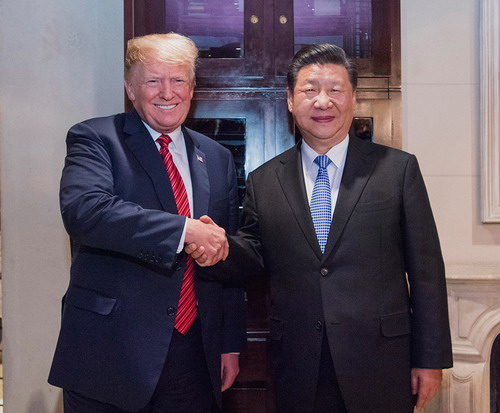DEVELOPING
President Donald Trump’s suggestion that the United States could allow up to 600,000 Chinese students to study at American universities triggered swift backlash from some of his staunchest allies, exposing tensions between “America First” politics and the financial realities of higher education. Trump raised the figure this week and defended it during a Cabinet meeting on Tuesday, Aug. 26, 2025, arguing that many colleges rely on international enrollment to stay solvent, according to remarks reported by major wire services.
Prominent conservatives objected almost immediately. Rep. Marjorie Taylor Greene criticized the notion in posts on X, framing it as a threat to opportunities for U.S. students and a security risk.
We should not let in 600,000 CHINESE students to attend American colleges and universities that may be loyal to the CCP.
— Rep. Marjorie Taylor Greene🇺🇸 (@RepMTG) August 26, 2025
If refusing to allow these Chinese students to attend our schools causes 15% of them to fail then these schools should fail anyways because they are being…
Former White House strategist Steve Bannon went further, reiterating his long-held view that foreign students should be issued an “exit visa” with 30 days to leave after graduation. The reactions captured broader anger within parts of the MAGA movement at the scale of the number Trump floated.
The debate spilled onto Fox News . On “The Ingraham Angle,” host Laura Ingraham pressed Commerce Secretary Howard Lutnick on how admitting “600,000 students from the communist country of China” aligns with an America-first policy. Lutnick countered that without Chinese students, roughly 15% of U.S. colleges—especially financially vulnerable institutions—could fail, a claim he presented as an economic reality rather than a political preference.
Trump’s remarks arrived against a shifting policy backdrop. In late May, Secretary of State Marco Rubio announced plans to “aggressively revoke” visas for certain Chinese students and tighten scrutiny of future applications—an approach that appears at odds with the large intake number Trump mentioned this week. Universities and lawmakers have sought clarity on how those two tracks would be reconciled in practice.
Politics in trade add another layer. Trump has threatened to raise tariffs on Chinese imports even further, but Washington and Beijing have agreed to a 90-day hold on planned increases. This is just a temporary truce to keep discussions going, not a full reduction of existing charges. The mix of harsh words and tactical pauses is like the larger push-pull that is now happening in the education debate.
Data from higher education show how important the stakes are. According to sector counts, the number of Chinese students in the U.S. decreased to 280,000 by 2023–2024. This was after peaking at more than 370,000 in 2019–2020. The drop was due to pandemic interruptions and stricter screening. Supporters argue that a boost to 600,000 would more than quadruple the present levels and help stabilize college budgets. Critics, on the other hand, worry that it could put a burden on screening systems and campus capacity.
What’s next: The White House hasn’t put out an official policy paper that sets a goal of 600,000 students. Any step in that direction would have to follow the State Department’s visa standards and the May enforcement stance. Expect colleges to keep arguing and asking detailed questions about security checks, program timetables, and how a big number like that would turn into an operational plan.
A global media for the latest news, entertainment, music fashion, and more.















